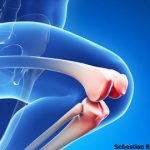(Reuters Health)—Total knee replacement can usually relieve pain and improve function, but a nonsurgical regimen can also be effective in some people without posing the complication risks of surgery, according to a new study.
The study found that while 85% of patients who underwent surgery showed clinically-significant improvement after one year, so did 67% assigned to a combination of supervised exercise, use of insoles, pain medication, education and dietary advice.
“It won’t do any harm trying the nonsurgical treatment,” chief author, Dr. Soren Skou of the University of Southern Denmark in Odense, told Reuters Health. “I hope this will give a more balanced discussion of whether or not to have the surgery.”
There’s little debate that knee replacement helps many people, and the new study of 100 patients confirms it. Surgery patients didn’t show just some improvement. They registered far less pain and disability than those assigned to the non-surgery group.
Yet the study was needed because as many as 1% of surgery patients die within 90 days of their operation and about one in five have residual pain at least six months after the procedure, said Dr. Jeffrey Katz of Harvard Medical School in Cambridge, Massachusetts, in an editorial published with the study online Oct. 21 in the New England Journal of Medicine. “Until now, we have lacked rigorously controlled comparisons between total knee replacement and its alternatives.”
“People need to understand and respect that knee replacement is not without complication. Knee replacement is a big surgical procedure and there are risks associated with it,” Dr. Andrew Pollak, chairman of orthopedics at the University of Maryland School of Medicine in Baltimore, told Reuters Health.
The study “really emphasizes what we suspected all along—total knee replacement works. It will be obvious to many of us who take care of patients. But for patients with significant symptoms and evidence of arthritis, total knee replacement is a very effective way of improving quality of life,” said Pollak, who was not involved in the study. “Therapy alone has a role. It does help certain patients. It can certainly prolong the time to when knee replacement is necessary.”
More than 670,000 total knee replacements are done in the U.S. each year at a cost of $36.1 billion.
All of the patients in the study had moderate to severe knee osteoarthritis. The team measured symptoms, pain and quality of life over a one year period.
Volunteers in the surgery group gained an average of 32.5 points versus 16.0 points for people who received nonsurgical therapy. All started off with a score of about 48 on a 101-point assessment scale.
Individual measures of pain, symptoms, activities of daily living, quality of life, and sports and recreation all showed significant improvement with surgery.
But while there were just six instances of serious adverse events in the 50 patients who didn’t receive surgery, there were four times as many among the 50 assigned to have a knee replaced. One third of the problems involved the replaced knee, including three cases each of unacceptable stiffness and deep vein thrombosis requiring anticoagulation, and one case each of deep infection and leg fracture.
Thirteen of the 50 patients assigned to the no-surgery group ended up having their knee replaced anyway during the 12-month, follow-up period.
“We’ve had some patients who had the surgery who did not improve in pain and, in some cases, had worse pain,” Skou said. They may improve with longer followup, but, he said, “what struck me is, if you do not go through surgery, you could always have the surgery later.”
Pollak said he doesn’t think the study will change U.S. attitudes about the surgery because it only followed patients for a year and cultural differences between U.S. patients the ones studied in Denmark may play a role in how the two treatments play out.
Of 108 eligible patients, 100 agreed to be randomly assigned to the surgery or non-surgery group. “Most health care providers in the U.S. couldn’t imagine where 100 of 108 patients would decide whether to have the operation based on the flip of a coin,” Pollak said.
Ultimately, what the new study tells patients, he said, “is what many doctors have been telling them right along. ‘You don’t have to have a knee replacement. It’s an option for you. But your quality of life will improve if you have it.'”

